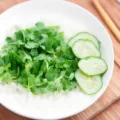What is Koji?
Koji is a type of mold scientifically known as Aspergillus oryzae. This remarkable organism has been used for centuries in Asian cuisine to ferment foods and beverages. Koji is responsible for the distinctive flavors and textures of many beloved products such as soy sauce, miso, sake, and more. The mold works by breaking down starches and proteins in the food into simpler compounds, resulting in enhanced umami flavor and improved digestibility.
The History of Koji
The use of koji dates back over 2,000 years. Originating in China, the practice of fermenting with koji spread to Japan and other parts of Asia. Koji’s ability to transform simple ingredients into complex, flavorful foods made it a staple in traditional cooking. Historical texts and archaeological findings indicate that koji has played a crucial role in food preservation and flavor enhancement for millennia.
How Koji Works
Koji mold produces enzymes such as amylases and proteases, which break down carbohydrates and proteins, respectively. These enzymes convert the starches in grains like rice and barley into sugars, and proteins into amino acids. This process not only enhances the flavor but also creates a hospitable environment for beneficial bacteria and yeast, further contributing to the fermentation process.
Common Uses of Koji
Koji is incredibly versatile and is used in a variety of culinary applications:
- Soy Sauce: Koji is essential in the fermentation of soybeans and wheat to produce soy sauce.
- Miso: Rice or barley koji is mixed with cooked soybeans to create miso paste.
- Sake: Koji converts the starches in rice into sugars that are then fermented by yeast to produce sake.
- Amazake: A sweet, low-alcohol drink made from fermented rice.
- Shio Koji: A seasoning made by fermenting koji with salt and water, used to marinate and tenderize meats.
Health Benefits of Koji
Koji-fermented products are not only delicious but also offer numerous health benefits. These include:
- Improved Digestion: Koji’s enzymes help break down foods, making them easier to digest.
- Enhanced Nutrient Absorption: Fermentation can increase the bioavailability of nutrients in foods.
- Probiotic Properties: Many koji-fermented foods contain beneficial bacteria that support gut health.
- Rich in Antioxidants: Fermented products often have higher levels of antioxidants.
- Low in Allergens: Fermentation can reduce allergenic compounds in foods, making them safer for sensitive individuals.
How to Make Koji at Home
Making koji at home can be a rewarding project. Here’s a basic method to get you started:
- Prepare the Substrate: Cook and cool rice or barley.
- Inoculate with Koji Spores: Sprinkle koji spores over the cooked grains.
- Incubate: Keep the inoculated grains at a warm temperature (around 30°C or 86°F) for 2-3 days, ensuring good airflow and humidity.
- Monitor: Check regularly for the development of a white, fluffy mold.
- Harvest: Once fully colonized, your koji is ready to use in various recipes.
FAQ
1. Is Koji safe to eat?
Yes, koji is safe to eat and has been consumed for centuries. It is used in many traditional foods and beverages.
2. Can I buy koji spores?
Yes, koji spores are available for purchase online and in specialty food stores. They are often sold under names like ‘koji-kin’ or ‘tane-koji.’
3. How should I store koji?
Fresh koji should be used quickly or dried for longer storage. Dried koji can be stored in an airtight container in a cool, dry place.
4. What does koji taste like?
Koji itself has a mild, slightly sweet taste. However, it imparts a rich umami flavor to the foods it ferments.
5. Can I use koji in non-traditional recipes?
Absolutely! Koji can be used to ferment a variety of foods, not just traditional Asian dishes. Experiment with it in marinades, sauces, and even desserts.









